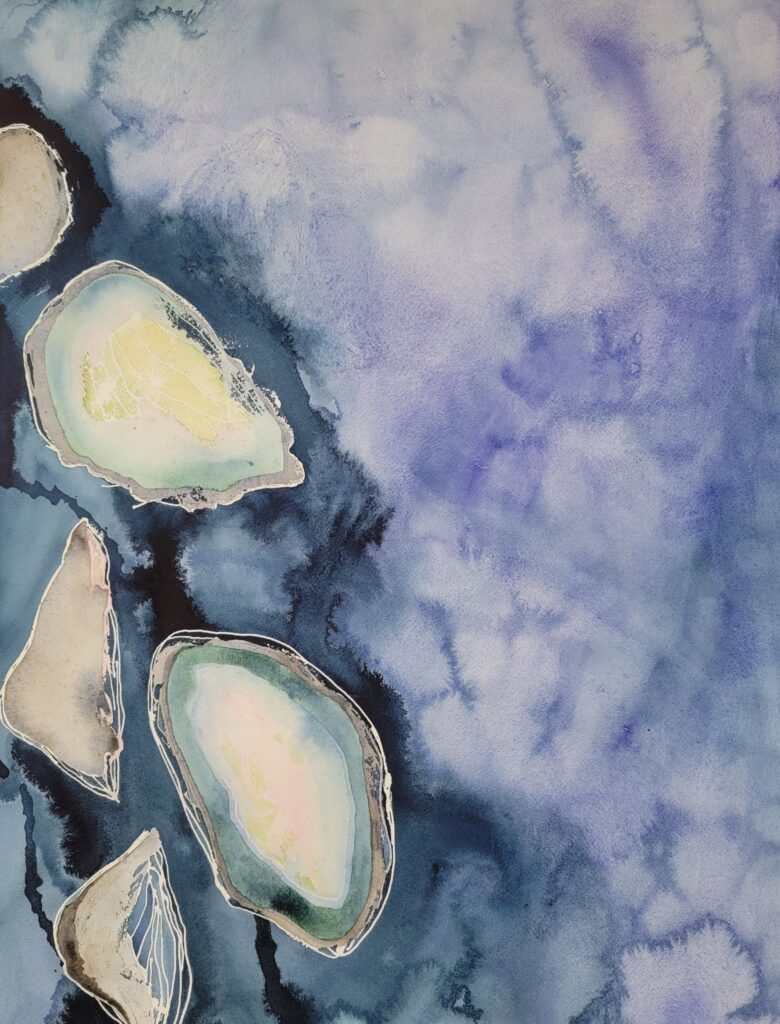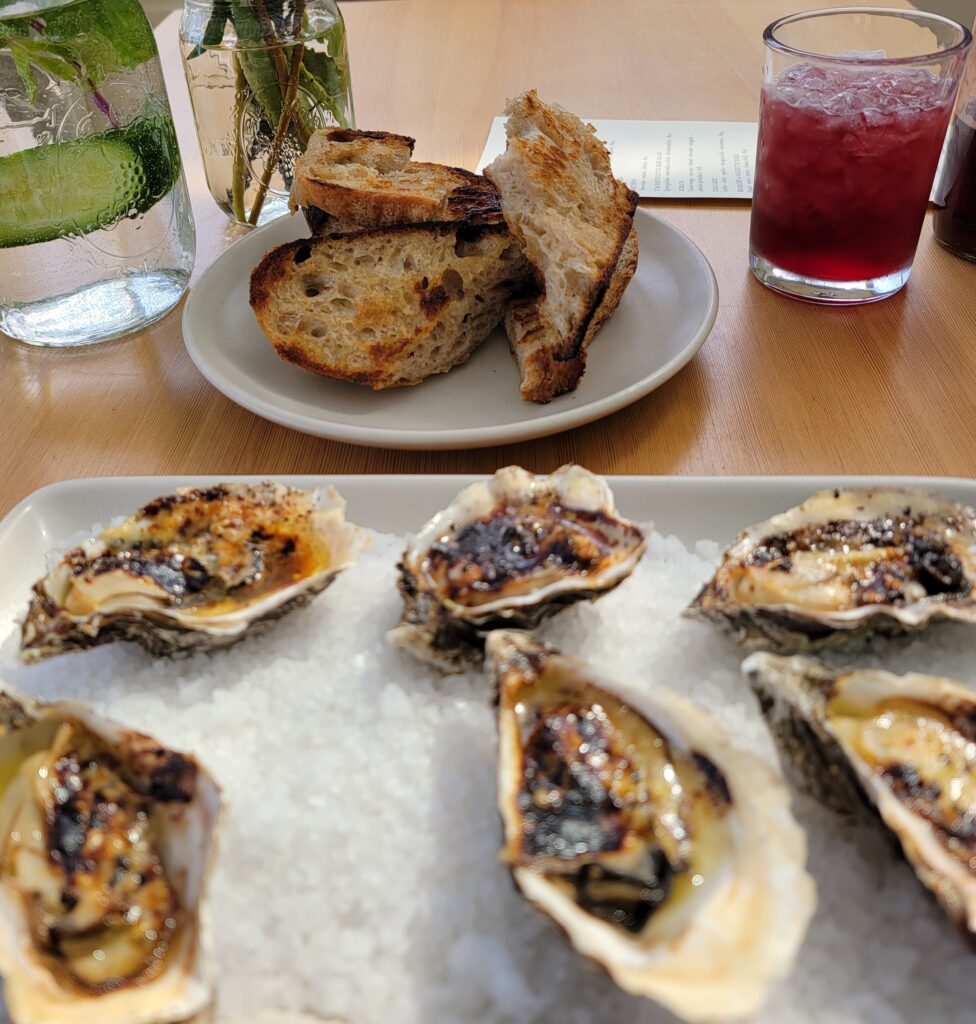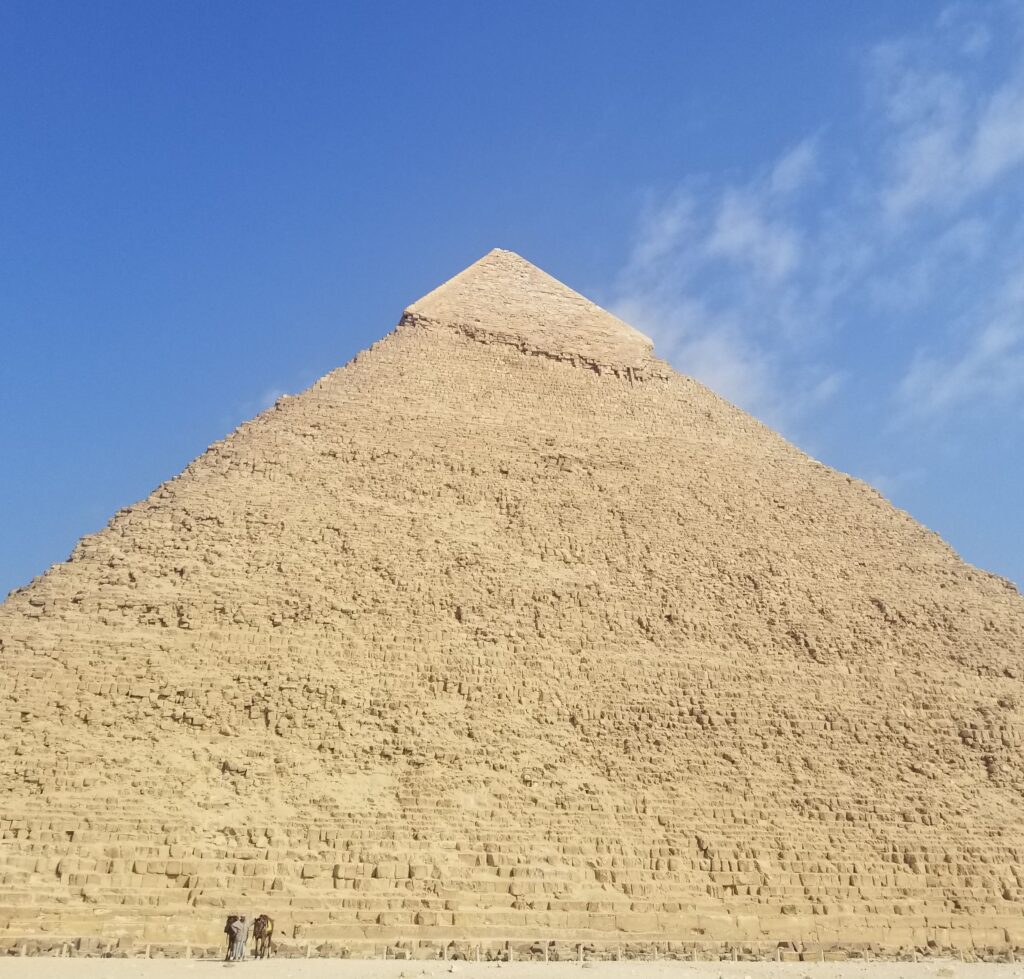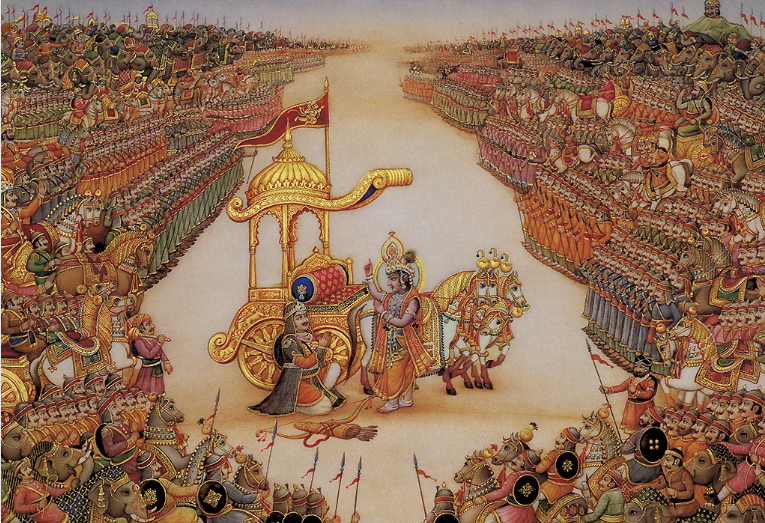
How does the future come to be?
Do we plan for it, or is the future planning us in ways we may not always understand?
One of my favorite takes in this territory is found within a classic Indian text called the Bhagavad Gita. The story begins with Arjuna having a breakdown at the beginning of a massive battle in which he has friends and relatives on both sides. Although being a warrior is his dharma, Arjuna falls into doubt, confusion, fear, and inaction at a critical moment. The Bhagavad Gita is a small slice of a much larger epic, and takes place in a trippy suspension of time right at the start of the battle. It consists of a dialogue between Arjuna and the god Krishna, who has come to whisper in Arjuna’s ear in the guise of his charioteer.
In Chapter 11, Arjuna asks Krishna to shed his charioteer avatar and show his full self. Krishna has to lend Arjuna a divine eye to fulfill this request, and even then, Arjuna is overwhelmed. As Krishna shows his infinite, multidimensional, blazing form, Arjuna is “filled with amazement,” but also, his hair stands on end. He spends many verses describing the wonderful and terrible things that he sees, and then says to Krishna, “I do not comprehend what You are doing.”
In response, Krishna says:
I am Time, the mighty cause of world destruction,
Who has come forth to annihilate the worlds.
Even without any action of yours, all these warriors
Who are arrayed in the opposing ranks, shall cease to exist.”Therefore stand up and attain glory!
Having conquered the enemy, enjoy prosperous kingship.
These have already been struck down by Me;
Be the mere instrument, O Arjuna.”
In effect, Krishna is telling Arjuna that the future has already been set in motion, and is inviting Arjuna to play his part in the circumstances in which he finds himself, to inhabit the instrument that he has been given.
Arjuna’s delight at seeing all of Krishna is tempered by a “mind [that] trembles with fear” and he begs Krishna for mercy and to return to being a charioteer. Through Arjuna’s experience, we can see why the totality of reality is cloaked in discrete forms, and why it normally only appears and speaks to us on the level that we are capable of receiving.
We can also get curious, if we wish, about cultivating the capacity to see and be with more, to increase our sensitivity to the whispers and dreams from the future. We can deepen our experience of the particularities of the instrument of perception that each of us has been given, and become available to new possibilities that we can’t conceive of or understand from ordinary mind.
The seeds of this painting began around a time of despair in mid-July of 2022. At that moment, I had thought that it would help to write in my journal, but after only a few lines, I put the pen down. It felt boring and pointless, all stuff that I had thought and written about a million times before. Old, habitual, stale mind.
A few days before that, I had a vague sense of being prodded to paint something. All I knew was that it needed to have large shapes.
After giving up on journaling, I sat down with a big sheet of paper and these were the forms that emerged. I didn’t know what I was creating until I stepped back and looked.
This is probably one of my favorite paintings, and it emerged from the tiniest, most generic knowing (“begin with large shapes”). At the time, I felt confused about it, like perhaps I don’t understand how anything comes to form. It’s not like oysters are a regular area of interest for me.
Fast forward to December. I had been wanting to get away from the northeast winter ever since COVID started. After considering a bunch of options, I chose the San Francisco Bay area, a place where I have friends and family, and where it seemed that the weather would be reasonably mild (haha, joke’s on me, enter a winter of intense rains and occasional hail in California).
I told my friend Steve about the range of geography that I was considering and he thought that I would enjoy the North Bay. Then I told my sister Danielle that I was looking at the North Bay and asked if she had recommendations for specific towns.
She gave me some suggestions, and as soon as I read her description of Inverness, I knew that was the one. I thought she was guiding me from an extensive knowledge of the Point Reyes peninsula, but it turns out that she had maybe passed through Inverness once. So it was an odd triangulation that landed me in this specific place.
After I rented an Airbnb in Inverness, the host sent me a welcome letter in which many paragraphs were devoted to oysters (the first sentence was: OYSTERS!). The information included where oysters are locally farmed; where to buy them to take home in a cooler; where to eat them raw, or barbecued, or drenched in garlic butter.
At some point, it occurred to me that the painting was a foreshadowing, a communication from the future. That the universe was signaling, in a cloaked and symbolic way, a new possibility that had already emerged and was just waiting for me to wind my way through the process of stepping into it.
Maybe that sounds bat-shit crazy to you, and it also would have sounded that way to a previous version of me. There were parts of the curriculum in my training as a breathwork facilitator where we were asked to pay attention to things that seemed miraculous, and there was a big piece of me that was fairly disenrolled in those kinds of exercises. Did them grudgingly and with a lot of skepticism. Blah, blah, blah, miracles, etc. etc.
But — what if what we call a “miracle” is just an opening into the fabric of reality in a way that we’re not normally present to? Or perhaps my digression into “miracles” is not as relevant as Jung’s concept of synchronicity: an “acausal connecting (togetherness) principle,” “meaningful coincidence”, “acausal parallelism” or “meaningful coincidence of two or more events where something other than the probability of chance is involved.”
It’s not the first time that this kind of synchronicity has happened to me.
When I was in the bottom chamber (“the Pit”) of the Great Pyramid in Egypt in 2020, I realized that I had had a lucid dream about it. In the dream, I was crawling on my hands and knees in the sand down a large corridor and then I emerged into a big open space with a huge fountain. I was afraid to go any further.
In the actual experience, I was also afraid, and full of grief, as I sobbed my way down the ladder that took me from the uppermost chamber and into what felt like an experience of the process of incarnation. I crawled on my hands and knees through the sand until I got to the opening, which contained a structure somewhat like a fountain and also, well, like a pit.
Luckily, there was a kind and more grounded friend (thanks, Katie!) who was there at the same time as me. She saw my distress, put her hand on my back, and that was exactly what I needed to settle in rather than be fearful.
Then, on my last full day in Inverness, I went on a long hike where I only ran into three other people. The two people who passed me at the end were having this conversation: “…so she was on this tour with a woman guide and they went to the pyramids, and they were up in the chamber where there was a sarcophagus, and they had 15 minutes to go in the sarcophagus…”
This is unmistakably a description of the King’s Chamber of the Great Pyramid (although the structure in there is not a sarcophagus…), and they could have been talking about my friend Denise. Denise and Russ had just returned from leading an annual three-week trip to Egypt the week before, and the randomness of this encounter struck me as an insane and beautiful synchronicity connecting my personal pilgrimage time in California with this year’s group pilgrimage to Egypt.
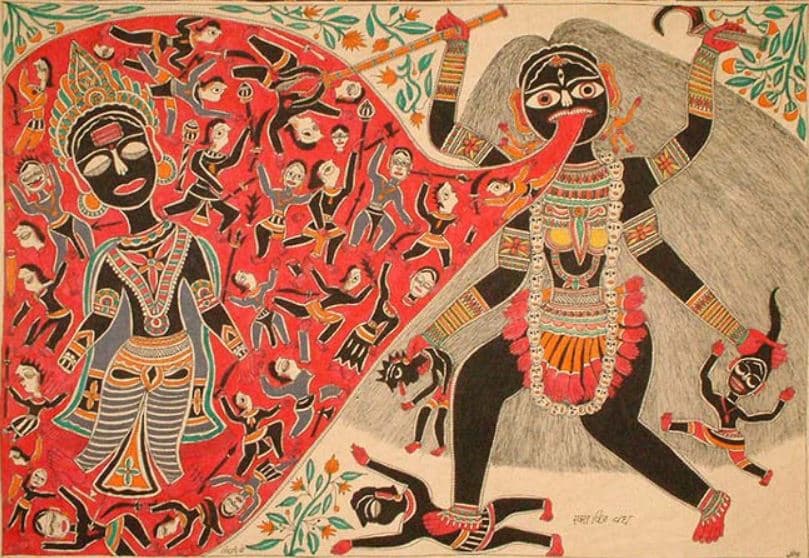
I’ve been thinking and reading a bit about time lately.
Indian mythology articulates four types of time, and goddesses like Kali (whose name means Time, as well as Death, and Darkness) so fully embody time that they can have meaningful encounters with a later version of someone who’s just been born. Douglas Brooks, my yoga philosophy teacher, has this to say about Krishna’s dance between human and divine form:
All is imprinted but almost nothing will be remembered. Krishna’s mystical identity apparently can only sustain in the subconscious as it forms reality’s unconscious foundation. At the level of ordinary human awareness, he is more like a dream: poignantly real in the moment and elusive in the next moment.”
I’ve also been dipping into the work of Jean Gebser, first in its summarized form in Seeing Through the World by Jeremy Johnson, and flirting with the source material, The Ever-Present Origin. In my understanding of Gebser thus far, human beings have opened up many states of consciousness related to space, and the next frontier is about opening up our relationship to time.
As I contemplate these materials, it occurs to me that the popular definition of “time” — a one-way linear progression from past to future — may be the equivalent of Krishna condensing the complexity of his being into a simple charioteer.
It’s a good workout for my brain to see if I can grok some insights on the nature of time, and I’m clear that I don’t need to (can’t…) cognitively understand the intricate technicalities of how time works in order to participate.
I find it entertaining to imagine “the future” sending out creative probes to see what gets picked up by people who don’t have handy access to a divine eye.
Most of all, I enjoy practicing how to pay attention, so that something in me is available to receive the seeds of the future in whatever way it chooses to make itself known.
